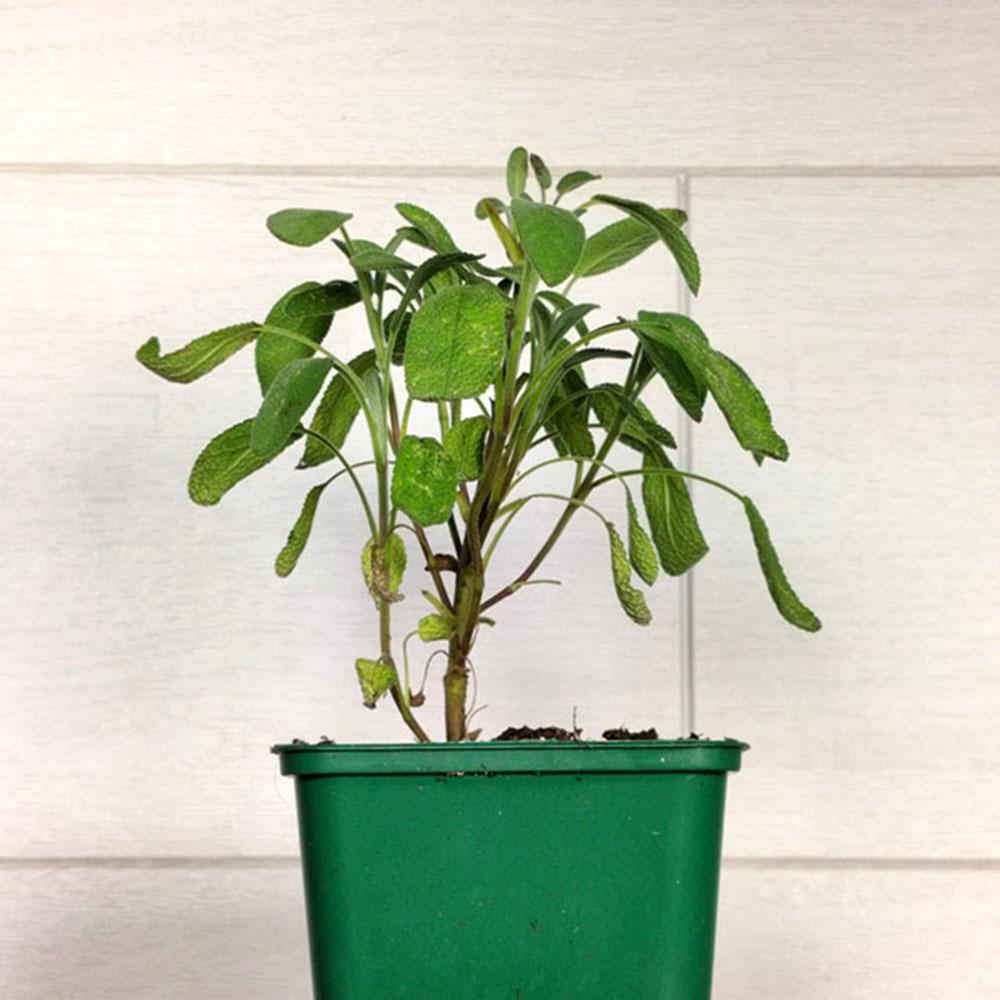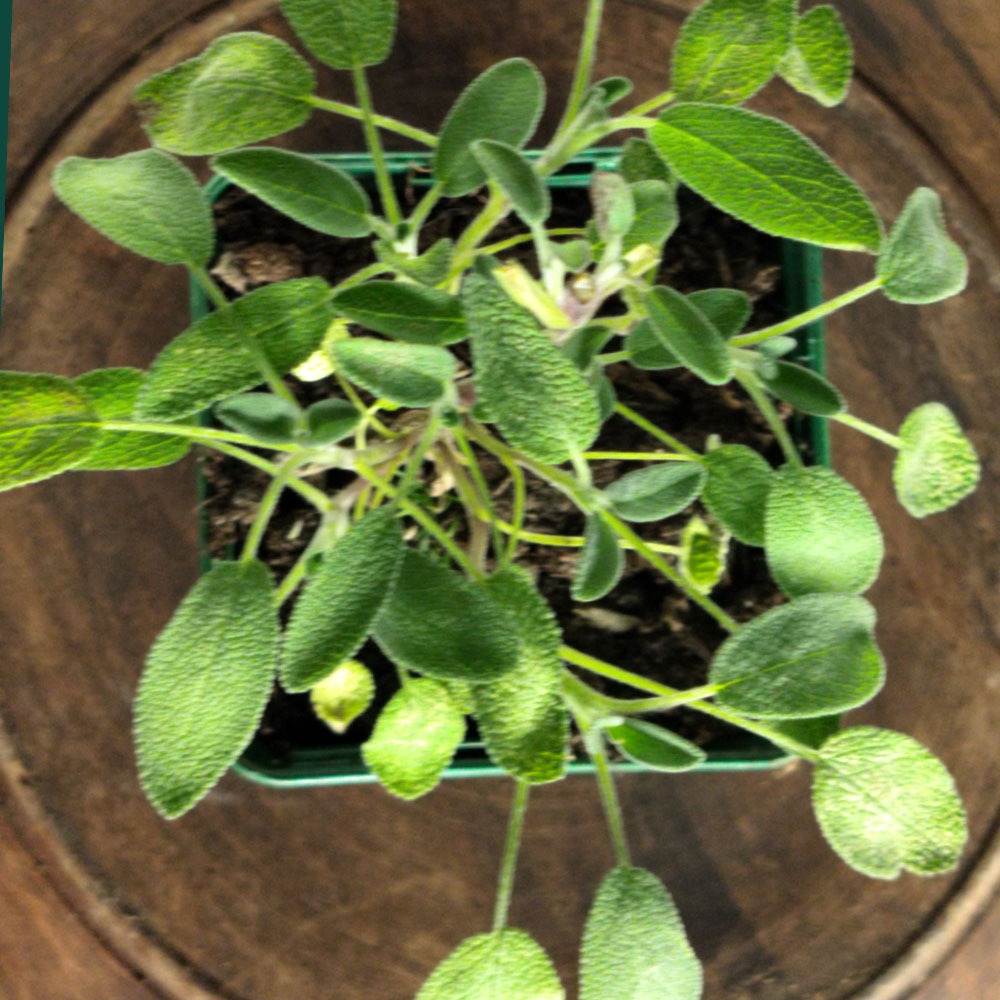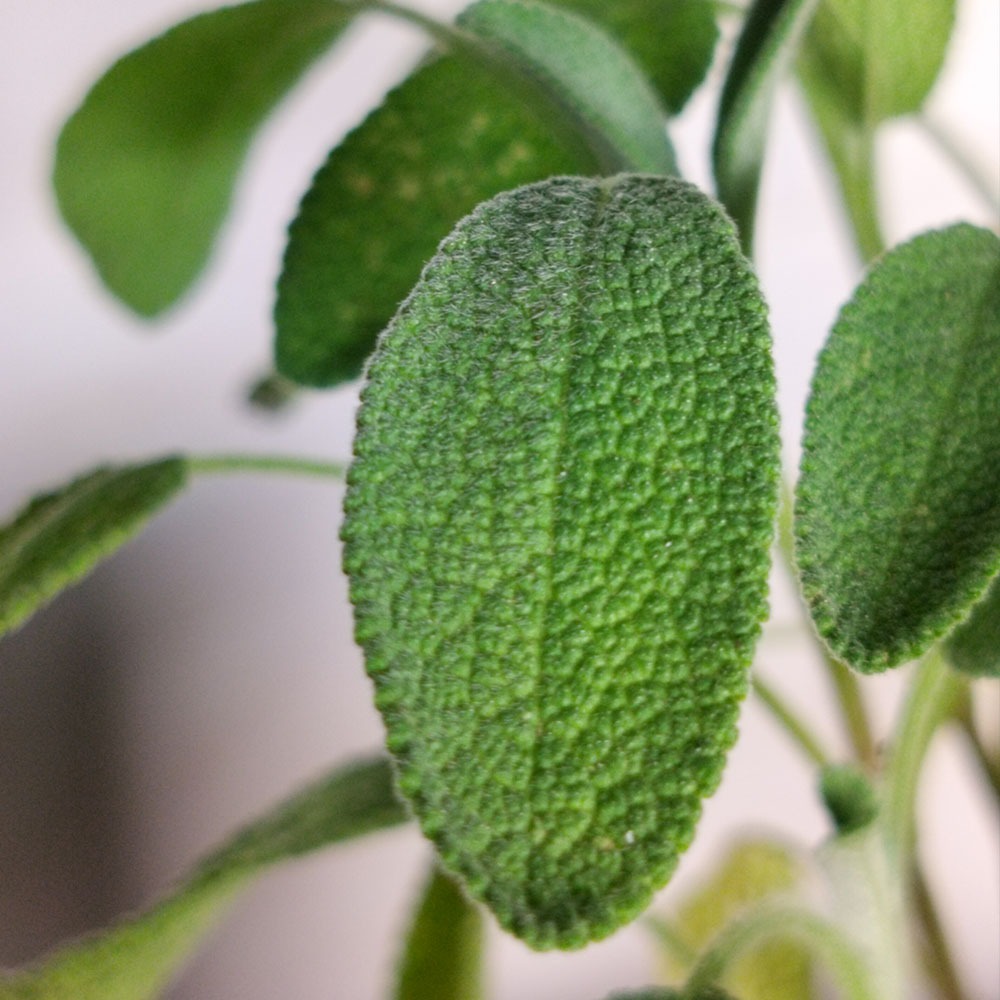No products in the cart.
Salvia officinalis
A fragrant herb used in many cultures for cooking and deserts.
Rated 0 out of 5
0 customer reviews
4,90 € – 12,00 €Price range: 4,90 € through 12,00 €
Tags: aromatique, comestible, medicinal, perennial, potted plant, secheresse, soleil, vivace, vivace en pot, xeriscaping
SKU: N/A
Category: Balcony-Friendly, Bees and Butterflies, Bouquet, Culinary, Distillations, Evergreen, Fragrant, Frost Hardy, Grey Ladies, Medicinal

Salvia officinalis
4,90 € – 12,00 €Price range: 4,90 € through 12,00 €
Salvia officinalis is a member of the Lamiaceae family, known for its aromatic properties, drought tolerance and long-standing relationship with mankind.
The leaves of Salvia are grey-green, elongated, lance-shaped, rugged on the upper side, and nearly white underneath due to the many short soft hairs.
The flowers are small, tubular, and range from purple to lavender in color. They are arranged in spikes that rise above the foliage and bloom primarily in the late spring to early summer.
The Tale:
The binary name, officinalis, refers to the plant’s medicinal use—the officina was the traditional storeroom of a monastery where herbs and medicines were stored.
Additionally, for those color enthusiasts out there – the color sage comes from the color of the foliage of the common (is she common though?) sage.
The sage is sage.
Treated as a holy herb by the Romans, planted in monasteries under Charlemagne before becoming an indispensable herb of great renown during the Middle Ages.
A soap, a soup, a cleansing herb for the house and the mind, a toothpaste, an infusion that wards off the plague… whatever you needed, salvia would bring you your salvation.
Other Names:
Common sage, garden sage, golden sage, kitchen sage, true sage, culinary sage, Dalmatian sage, and broadleaf sage.
Origin:
Central America
| Weight | 0,5 kg |
|---|---|
| Container Size | 9×9 cm, 1L, 2L |
| Flowering | April, May, June |
| Soil | Dry/Rocky |
| Exposure | Sun |
| Frost Tolerance | -15°C |
| Size | 0,6m H x 0,9m W |
Reviews
0
Rated 0 out of 5
0 customer reviews
5
0
4
0
3
0
2
0
1
0
Only logged in customers who have purchased this product may leave a review.
Related Products
Cerastium tomentosum var. columnae
A grey-green spreading ground cover from the mountains.
A grey-green spreading ground cover from the mountains.
Rated 0 out of 5
Aegopodium podagraria ‘Variegata’
A popular light, green and white groundcover.
A popular light, green and white groundcover.
Rated 0 out of 5
Stipa tenuifolia
A species of long, blonde, feathery grass.
A species of long, blonde, feathery grass.
Rated 0 out of 5
Sedum spectabile Septemberglut
A species of flowering plant in the stonecrop family – drought tolerant, with vibrant pink flowers and a spectacularly long flowering period.
A species of flowering plant in the stonecrop family – drought tolerant, with vibrant pink flowers and a spectacularly long flowering period.
Rated 0 out of 5
Jacobaea maritima
A wooly white perennial plant from the Mediterranean region.
A wooly white perennial plant from the Mediterranean region.
Rated 0 out of 5
Salvia sclarea – Clary Sage
A fuzzy perennial that is largely grown for its essential oil.
A fuzzy perennial that is largely grown for its essential oil.
Rated 0 out of 5
Artemisia abrotanum
A highly fragrant, medicinal and striking grey-green bush.
A highly fragrant, medicinal and striking grey-green bush.
Rated 0 out of 5
Mertensia maritima
A deciduous perennial with fleshy, blue-grey-green leaves that naturally thrives on the wind and sea swept coasts
A deciduous perennial with fleshy, blue-grey-green leaves that naturally thrives on the wind and sea swept coasts
Rated 0 out of 5
Helichrysum italicum
An evergrey, fragrant perennial that will bring a distinctly Mediterranean atmosphere.
An evergrey, fragrant perennial that will bring a distinctly Mediterranean atmosphere.
Rated 0 out of 5
Koeleria glauca Blue Sprite
An ornamental, low growing blue grass
An ornamental, low growing blue grass
Rated 0 out of 5
Tanacetum densum subsp amani
A shrublet composed of soft, finely divided silvery gray-white leaves.
A shrublet composed of soft, finely divided silvery gray-white leaves.
Rated 0 out of 5
Lavandula angustifolia
A highly aromatic, flowering perennial used for cooking in many cultures
A highly aromatic, flowering perennial used for cooking in many cultures
Rated 0 out of 5
Artemisia alba subsp camphorata
A highly fragrant, grey-green bush.
A highly fragrant, grey-green bush.
Rated 0 out of 5
Potentilla anserina
A distinctly silvery, silky and lacy perennial.
A distinctly silvery, silky and lacy perennial.
Rated 0 out of 5
Helichrysum orientale
A perennial with soft, ash gray foliage and yellow button flowers
A perennial with soft, ash gray foliage and yellow button flowers
Rated 0 out of 5
Nepeta x faassenii
Catnip is known for its grey-green, aromatic foliage and masses of lavender blue flowers.
Catnip is known for its grey-green, aromatic foliage and masses of lavender blue flowers.
Rated 0 out of 5
Euphorbia myrsinites
Known for its draping form of silver-gray foliage and radiant blooms.
Known for its draping form of silver-gray foliage and radiant blooms.
Rated 0 out of 5
Artemisia Valerie Finnis
A semi-evergreen, aromatic variation on the theme of Artemisia.
A semi-evergreen, aromatic variation on the theme of Artemisia.
Rated 0 out of 5
recent view product
Potentilla anserina
A distinctly silvery, silky and lacy perennial.
A distinctly silvery, silky and lacy perennial.
Rated 0 out of 5








































There are no reviews yet.